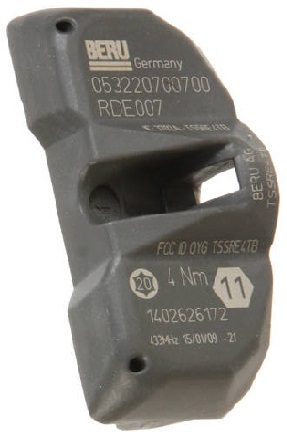Why OEM (original equipment manufacturer) TPMS is better than aftermarket TPMS
There comes a time in every driver's life where the need to replace factory equipped TPMS sensors arises. There are several reasons why a person who need to change TPMS sensors:
Doing a TPMS search on Google for TPMS sensors will yield two results: OE TPMS sensor replacements and aftermarket sensors. Aftermarket sensors are usually cheaper than original equipment sensors, but don't let the price fool you. Running your vehicle on an obscure brand of aftermarket sensors could prove to be a very costly mistake. A common complaint we get from our customers about aftermarket sensors is how quickly the sensors fail 3 months, 30 days, one week, 5 days, 30 minutes...these are all time frames we get for the failure rate of aftermarket sensors. These numbers don't even come close to the 5-7 year average lifespan of OEM TPMS sensors. There are many instances in which the low-tire-pressure warning light would turn on, perhaps indicating that the tire pressure in one or more of the tires was below specified value. Naturally, what would normally happen is that the tire pressure light would turn off right after the tires are filled to the correct PSI. This is not the case with many aftermarket sensors. The TPMS warning light would turn on again shortly after getting back on the road, resulting in wasted time and frustration. Some drivers would take their vehicle to the local auto shop and have the sensors reset, only to have the light come back on 30 minutes later. Resetting sensors is not an easy or cheap process either. Tire shops charge a fee to break down the tire, remove it from the rim, reprogram the sensor, and remount the tire (assuming the problem has been solved). Such a painful, time consuming, and expensive process could easily be avoided with original equipment tire pressure sensors. Other aftermarket sensor problems include: TPMS light going off when tires are inflated to specified values, TPMS sensors simply not working, poor customer service, lack of manufacturer warranty, and an overall lack of know-how regarding reset/relearn procedures, fitment guides, installation instructions in auto shops around the nation. Original equipment is the way to go. There's tons of information about OE TPMS available to the public. To access the information you can try the following methods:
OE TPMS Sensors last longer, have a 1 in 1 million failure rate, come with a manufacturer warranty, and are much better understood by auto shops around the country. Don't waste money and time with cheap knock offs. Never compromise your safety and the safety of other to save a buck. Feel free to use our website as a resource for all things TPMS including: fitment and compatibility, frequencies, split year information, manufacturer information, and the latest in TPMS news. Feel free to contact our customer service department with any questions and inquiries you may have at [email protected] or give us a call at (714) 482-3996. |

